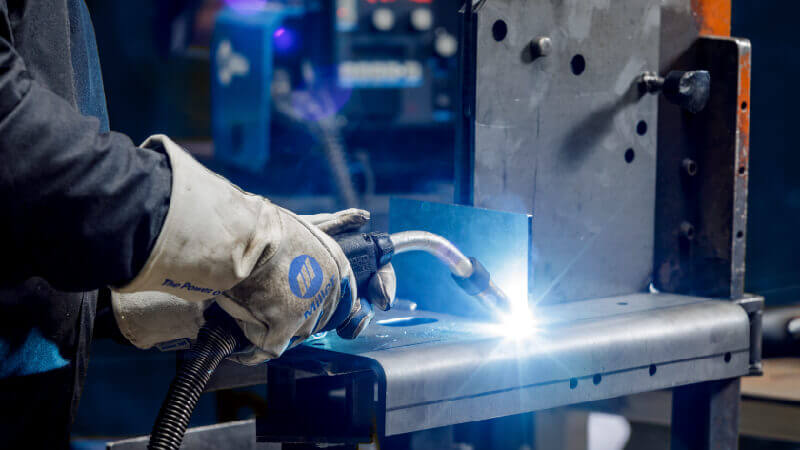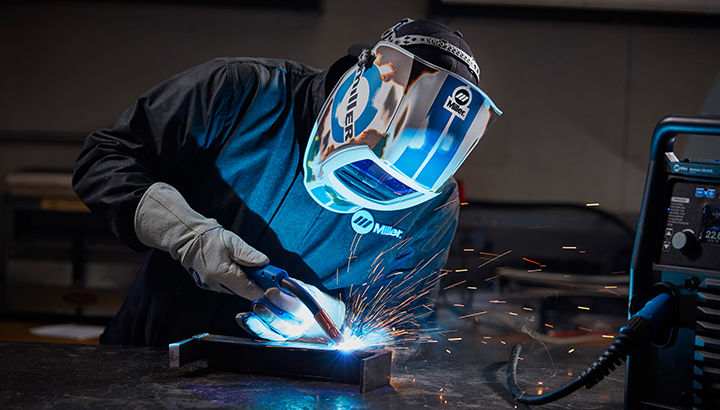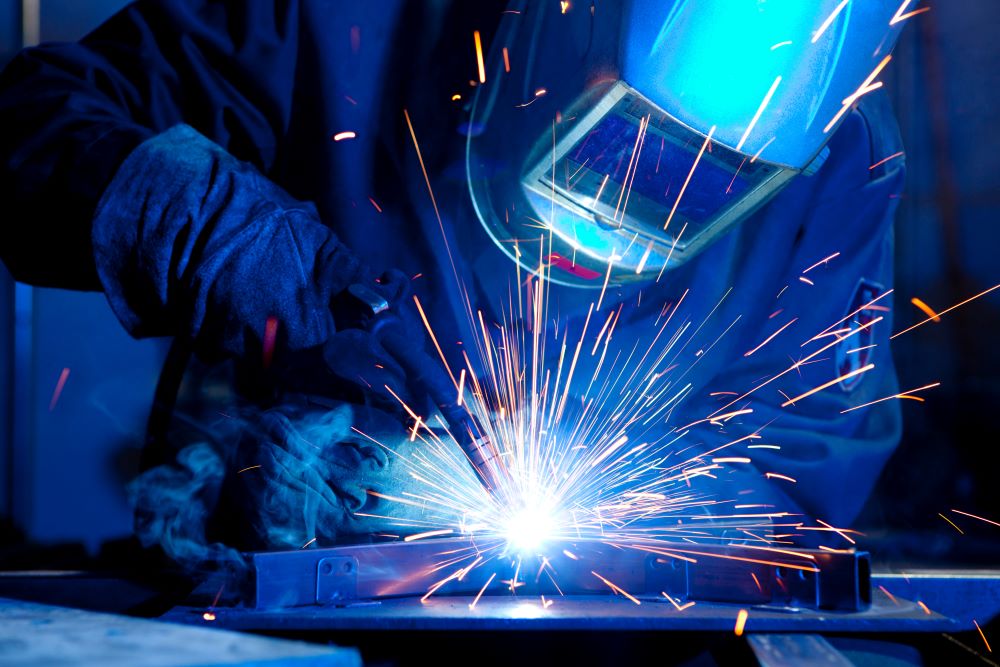Usual Welding Fixing Issues and Just How to Address Them Properly
Welding fixings commonly experience a variety of concerns that can jeopardize the honesty of the end product. Typical troubles include poor penetration, porosity, and imbalance, to name a few. Each problem offers unique difficulties that call for details strategies for resolution. Understanding these issues is important for welders intending to boost their abilities and results. This discussion will certainly discover these typical welding repair problems and effective approaches to address them.
Inadequate Penetration
Poor infiltration occurs when the weld metal falls short to totally fuse with the base material, resulting in weak joints and possible structural failures. This concern typically originates from insufficient warm input, wrong electrode angle, or incorrect welding rate. Welders may run into poor penetration as a result of a miscalculation of the essential parameters for a details product density or kind. In addition, contamination on the base product's surface can hinder efficient bonding, exacerbating the problem. To resolve insufficient penetration, welders need to assure appropriate setups on their devices and preserve a clean work surface area. Normal inspection of welds is recommended to recognize any type of shortages early, enabling timely adjustments and the avoidance of jeopardized structural stability in bonded assemblies.
Porosity
Porosity is a common issue in welded joints that shows up as small gas bubbles entraped within the weld metal. This defect can compromise the integrity of the weld, causing lowered toughness and possible failure under stress. Montana Mobile Welding and Repair Belgrade. Porosity usually develops from contamination, dampness, or incorrect welding methods, which enable gases to get away right into the molten weld pool. To resolve porosity, welders should ensure appropriate surface preparation, preserve a tidy workplace, and use suitable welding specifications. In addition, selecting the right filler material and protecting gas can mitigate gas entrapment. Normal inspection and screening of welds can aid determine porosity early, ensuring timely restorative activities are taken, thereby maintaining the high quality and dependability of the bonded framework
Imbalance
Misalignment in welding can arise from different factors, consisting of incorrect setup and thermal growth. Recognizing the origin is essential for effective resolution. Numerous adjustment strategies are readily available to straighten elements and guarantee structural honesty.
Reasons for Imbalance
Welding misalignment commonly originates from a selection of underlying concerns that can endanger architectural stability. One key reason is inappropriate fit-up of components prior to welding, which can lead to spaces and uneven surface areas. Variants in thermal development throughout the welding process can likewise result in distortion, specifically if the products being joined have various coefficients of expansion. Furthermore, poor securing and fixturing might stop working to hold parts safely in position, causing motion during welding. Inadequately maintained equipment, including welding makers and tools, may introduce variances in the weld bead, further adding to imbalance. Operator error, stemming from inadequate training or experience, can likewise play a considerable role in creating misaligned welds.

Improvement Strategies Offered
Resolving misalignment efficiently calls for a combination of corrective techniques customized to the details concerns at hand. One typical technique is making use of fixtures or jigs to hold components in the proper setting throughout welding, making certain consistent placement. Additionally, preheating the products can assist minimize distortion and enhance fit-up. For substantial imbalance, mechanical adjustment methods, such as making use of hydraulic jacks or clamps, can be utilized to fix the setting prior to welding. Post-weld warm treatment may likewise be necessary to alleviate stress and anxieties created by misalignment. Careful examination and adjustment throughout the setup stage can protect against misalignment problems from becoming substantial troubles, promoting a smoother welding procedure and boosting overall architectural honesty.
Distortion
Distortion is a typical obstacle in welding that can emerge from different elements, including irregular home heating and air conditioning. Comprehending the reasons for distortion is crucial for executing effective prevention strategies. Resolving this issue not just improves architectural honesty yet also improves the general high quality of the weld.
Sources of Distortion
When based on the intense warm of welding, products typically undertake adjustments that can lead to distortion. This sensation largely emerges from thermal development and contraction throughout the welding procedure. As the weld location heats up, the product increases; upon air conditioning, it contracts, which can develop internal tensions. On top of that, irregular heating across a work surface can worsen these tensions, resulting in warping or bending. The kind of material also plays a substantial role; steels with varying thermal conductivity and coefficients of growth might respond in a different way, resulting in uncertain distortions. Inadequate joint style and inadequate fixturing can add to misalignment throughout welding, increasing the likelihood of distortion. Recognizing these reasons is essential for effective welding repair work and avoidance strategies.
Avoidance Techniques
Efficient prevention techniques for distortion throughout welding focus on controlling warmth input and making sure appropriate joint design. Preserving a constant warm input helps to decrease thermal growth and tightening, which can cause distortion. Using methods such as pre-heating the workpiece can additionally minimize the temperature level gradient, promoting consistent heating. Furthermore, selecting ideal joint styles, such as T-joints or lap joints, can improve stability and decrease stress and anxiety focus. Applying appropriate fixturing to safeguard the work surfaces in position further help in keeping alignment throughout the welding procedure. Finally, staggered welding sequences can disperse heat a lot more evenly, preventing local distortion. By applying these techniques, welders can considerably lower the chance of distortion and enhance the general high quality of their welds.
Cracking
Cracking is a typical concern run into in welding repair services, usually arising from various elements such as incorrect cooling prices, product option, or insufficient joint prep work. The occurrence of fractures can significantly compromise the integrity of the weld, leading to prospective failings during operation. To resolve this issue, welders have to first examine the root creates, making sure that products work and properly selected for the specific application. In addition, controlling the air conditioning rate during the welding procedure is important; fast cooling can cause tension and lead to fracturing. Correct joint layout and prep work also add to minimizing the threat. Implementing these techniques can boost weld high quality and sturdiness, eventually reducing the likelihood of cracking in ended up weldments.

Incomplete Fusion
A substantial concern in welding repair work is incomplete fusion, which occurs when the weld steel does not appropriately bond with the base product or previous weld passes - Belgrade Fabrication. This defect can lead to weak points in the joint, potentially endangering the stability of the welded framework. Elements adding to incomplete blend consist of not enough warmth input, inappropriate welding technique, and contamination of the surfaces being signed up with. To resolve this problem successfully, welders must assure correct pre-weld cleansing and surface area preparation, along with readjust their welding specifications to attain adequate penetration and fusion. Normal evaluation throughout the welding process can additionally assist identify incomplete fusion early, enabling prompt restorative measures to enhance site link the overall top quality of the weld
Overheating
While welding repair work can improve architectural stability, overheating provides a considerable obstacle that can bring about product destruction. Extreme warm throughout welding can change the mechanical residential or commercial properties of steels, leading to lowered strength, enhanced brittleness, and warping. This phenomenon is especially essential in high-stress applications where architectural integrity is extremely important. Determining getting too hot can involve aesthetic examinations for discoloration or distortion, in addition to monitoring temperature during the welding procedure. To minimize the risks related to getting too hot, welders need to use ideal techniques, such as controlling heat input, changing traveling speed, and utilizing ideal filler materials. Additionally, executing pre- and post-weld heat treatments can aid restore product residential or commercial properties and boost the general quality of the repair service, ensuring lasting performance and safety.
Regularly Asked Inquiries
What Are the Common Indicators of a Welding Defect?

How Can I Check My Welds for High quality?
To examine welds for quality, one can use aesthetic assessments, ultrasonic screening, and radiographic techniques. Each technique guarantees structural honesty, recognizes issues, and confirms adherence to defined criteria, ultimately boosting the integrity of firepower welder the bonded joints.
What Safety Preventative Measures Should I Take While Welding?
When welding, one must focus on safety by putting on ideal personal safety tools, making certain appropriate air flow, protecting combustible materials away, maintaining a tidy office, and knowing surroundings to avoid injuries and accidents.
Can I Fix a Weld Without Remodeling the Entire Joint?
Fixing a weld without renovating the entire joint is possible, relying on the damages (Belgrade Welding). Techniques such as grinding, adding filler material, or making use of a welding procedure can efficiently deal with certain problems while preserving the bordering structure
What Devices Are Important for Reliable Welding Fixes?
Important devices for reliable welding repair services consist of a welding maker, cord brush, mill, safety equipment, clamps, and filler products. Each device plays an important role in making certain quality and security during the repair service process. Porosity typically develops from contamination, dampness, or click reference improper welding techniques, which permit gases to leave right into the molten weld swimming pool. Poorly kept equipment, including welding makers and tools, may present disparities in the weld grain, further contributing to misalignment. When subjected to the intense warm of welding, materials often undertake adjustments that can lead to distortion. Fracturing is an usual concern encountered in welding repairs, frequently resulting from various factors such as improper cooling rates, material option, or inadequate joint prep work. A substantial concern in welding repairs is insufficient combination, which takes place when the weld steel does not appropriately bond with the base material or previous weld passes.
Comments on “Can you spot signs of incomplete fusion? Montana Mobile Welding and Repair explains how to detect them”